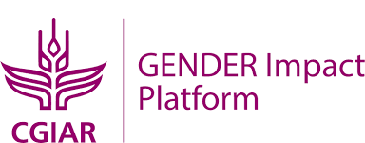By: Francois Iradukunda, Bioversity International and GREAT RTB Fellow
As one of the country’s most important crops for generating income and food for household consumption, in Burundi, banana is more than just another crop.
“Banana is a green gold in our community, given the way it produces a regular income for households year-round,” according to a male farmer attending a focus group discussion held in Gashoho commune in Muyinga province.
This recognition goes beyond farmers: banana has also been ranked as the most important of six crops prioritized by the National and Provincial Agricultural Investment Plan of the government of Burundi.
This is explained by the fact that, being a perennial crop, it is harvested throughout the year, so it provides regular food and income to contribute to the food security and livelihoods. But this living gold mine is in trouble: as in much of east and central Africa, banana production in Burundi is threatened by Banana Xanthomonas Wilt (BXW), a devastating banana bacterial disease that can cause extreme yield losses if control measures are not quickly applied.
Our team from Bioversity International, through the AMASHIGA project funded by USAID/FFP and led by CRS, is promoting a simple approach called Single Diseased Stem Removal (SDSR) to help manage the disease.
In order to be effective, SDSR requires the regular engagement of all household members involved in cropping activities, as it is based on regular monitoring, early removal of emerging male buds, and removal of diseased plants, among other control practices. To get such full involvement from household members, researchers from our team at Bioversity realized that we would need to understand how gender affects household member relationships with cropping systems.
Research evidence highlights the critical importance of gender in technology adoption and scaling out. Most gender research reaches the same conclusion, that inequalities in access to and control over agricultural production assets and market benefits contributes to lower productivity, lost income, and higher levels of poverty, as well as undernutrition. The World Bank’s sourcebook “Gender and Agriculture” (2009) finds that the “failure to recognize the roles, differences and inequalities [between men and women], poses a serious threat to the effectiveness of the agricultural development agenda.”
To better understand the social and gendered factors that play a role in the adoption and scaling out of SDSR in Burundi, our team at Bioversity International conducted a gender analysis using skills and approaches that we learned at the GREAT Gender-responsive Root, Tuber and Banana Breeding Course, such as good practices for convening focus group discussions, and the use of key informants.
Our main focus was to analyse the gender dynamics in banana cropping systems, and how these influence (either positively or negatively) SDSR adoption, and scaling out the technology. The study was conducted with ‘farmer learning groups’ that were previously established in pilot sites in order to validate the efficacy of SDSR.
The preliminary results from our research show that banana is the main source of income in the region, and that the crop is ‘owned’ by men. Likewise, cropping practices and the selection of banana varieties are controlled by men. These findings demonstrate that although banana is the main source of income, this does not necessarily mean that it contributes to the household’s well-being, since it is not benefiting both men and women. Therefore, there may be a disincentive for women to contribute to banana management activities and banana disease control if they are not getting the benefits from the crop.
A woman participating in a key informant interview said, “women are reluctant to manage BXW. The majority of women do not have time. Furthermore, a woman may be particularly discouraged when her husband does not show her how the money earned from banana is used.”
Other findings from the study show that access to information is also unequal. Men participate most often in agricultural trainings, and women have limited exposure to sources of information such as radio. This has an impact on the adoption of agricultural technologies by women, not because they are not interested, but because they may not be aware of a technology, why it is important, or how it is applied.
Perspectives
The findings from this study will be used to inform the development of gender-responsive strategies that seek to minimize potentially harmful effects of differences in asset control, labor allocation, and income in banana production systems to better manage BXW and to create more equitable banana farming systems. The findings will also be used to make recommendations for gender-responsive messaging to scale-out SDSR practices, including the use of appropriate communication channels.
A question that many have is, if the findings show that banana is controlled by men – from production to sale – why should we try to target women for out-scaling and adoption of SDSR?
If we look at banana as a “plant” and not as a “system,” targeting women in SDSR adoption may not be relevant. However, banana is in the center of the cropping system in northeast Burundi where this study took place. Banana is not isolated, but is intercropped with other crops; management of intercropped plants, many of which are managed by women, can affect (positively or negatively) banana cropping and banana disease control.
Furthermore, banana influences the local market, in that men are sellers, and women are either buyers or consumers, which means that there should be an interaction between men and women around banana.
All of this demonstrates the centrality of gender in farming systems, and in particular in the control of this banana disease that threatens to effect livelihoods in Burundi.
This research is made possible thanks to support from: Bioversity International and USAID/FFP, through the AMASHIGA project.





